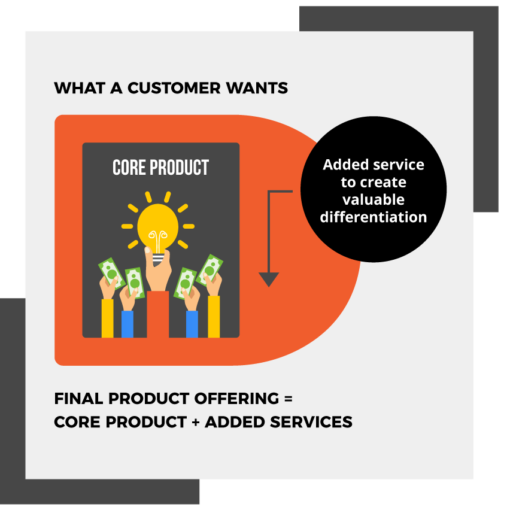
It’s a crowded marketplace and standing out from the competition should be part of the initial business plan. But how do you stand apart? There’s one powerful method to do so – creating a Unique Selling Proposition (USP). In this blog, we’ll explore what a USP is, the history of it, a few examples, and how you can define one for your own business.
Defining and Understanding a USP:
A USP is the one thing that makes your business stand out from the competition. It’s a specific benefit that makes your product or service unique and enticing. Simply put, it’s the reason why customers choose your product over others.
But it’s not just about being different. It’s also about offering something so valuable that it becomes indispensable to your customers. Your USP is therefore more than just a catchy slogan. It’s a promise of value. It’s the reason why your product is worth buying. It’s the core of your marketing message.
A strong USP can guide your business decisions and help you focus on what really matters. It can help you target your marketing efforts and differentiate your business from competitors. For example, if your USP is offering customisable meal plans tailored to each customer’s dietary preferences, then your marketing messages, product development, and customer service should all reinforce this benefit.
A well-defined USP is the cornerstone of effective marketing and business strategy.

The History and Evolution of the USP:
The concept of the USP is not new. It was proposed as a theory in the early 1940s to explain a pattern among successful advertising campaigns of that era. These campaigns made unique propositions to the customers that convinced them to switch brands. The term was coined by Rosser Reeves of Ted Bates & Company.
In Rosser’s 1961 book “Reality in Advertising,” he lamented that the USP was widely misunderstood and offered a precise definition in three parts:
- Each advertisement must make a proposition to the consumer. Not just words, not just product puffery, not just show-window advertising. Each advertisement must say to each reader: “Buy this product, and you will get this specific benefit.”
- The proposition must be one that the competition either cannot, or does not, offer. It must be unique.
- The proposition must be so strong that it can move the mass millions, i.e., pull over new customers to your product.
Later, Theodore Levitt, a professor at Harvard Business School, suggested that “Differentiation is one of the most important strategic and tactical activities in which companies must constantly engage.”
In today’s world of information overload, it is critical for businesses to rapidly convey what differentiates their product or service from the rest. As we begin to rely more and more on digital platforms to share our value, where attention is ever fleeting, a crystal-clear articulation of a valued differentiator is a must for survival.

Examples of USP:
To illustrate the concept of a USP in action, let’s look at three examples:
Domino’s Pizza had a USP that was all about delivery speed: “You get fresh, hot pizza delivered to your door in 30 minutes or less, or it’s free.”
TOMS Shoes has a “One for One” USP. For every pair of shoes you purchase, TOMS will give a pair to a child in need.
Slack, the business communication platform, has a USP focused on seamless integration: “All your tools in one place.”

Determining Your USP:
To define your USP, start by understanding your customers and their needs.
Ask questions such as:
- What problems does my product or service solve for customers?
- What makes my brand different from competitors?
- What unique benefits do I offer that others don’t?
By answering these questions, you can identify the key elements that make your brand stand out. And once you’ve defined your USP, it should serve as the foundation for your marketing plan. Your USP will influence everything from the channels you use to reach customers, to the messaging you use in your campaigns. Your USP should line up with what your customers think is valuable and be front and center in all your marketing efforts, from advertising campaigns to social media posts. By consistently highlighting your unique value proposition, you can attract new customers and build a loyal following for your brand.
Ultimately, a well-defined USP not only sets your business apart from competitors. It also creates meaningful connections with your target audience, driving long-term growth and sustainability. So, take the time to define your USP carefully and let it guide your brand to success in the dynamic landscape of today’s business world.

